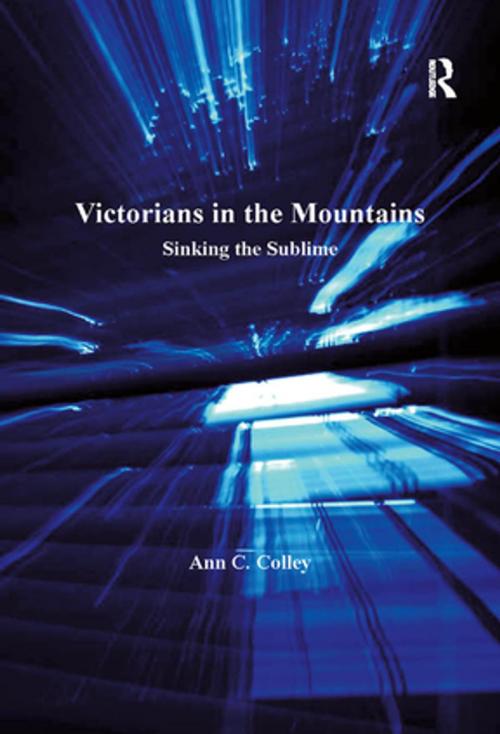| Author: | Ann C. Colley | ISBN: | 9781317001980 |
| Publisher: | Taylor and Francis | Publication: | February 24, 2016 |
| Imprint: | Routledge | Language: | English |
| Author: | Ann C. Colley |
| ISBN: | 9781317001980 |
| Publisher: | Taylor and Francis |
| Publication: | February 24, 2016 |
| Imprint: | Routledge |
| Language: | English |
In her compelling book, Ann C. Colley examines the shift away from the cult of the sublime that characterized the early part of the nineteenth century to the less reverential perspective from which the Victorians regarded mountain landscapes. And what a multifaceted perspective it was, as unprecedented numbers of the Victorian middle and professional classes took themselves off on mountaineering holidays so commonplace that the editors of Punch sarcastically reported that the route to the summit of Mont Blanc was to be carpeted. In Part One, Colley mines diaries and letters to interrogate how everyday tourists and climbers both responded to and undercut ideas about the sublime, showing how technological advances like the telescope transformed mountains into theatrical spaces where tourists thrilled to the sight of struggling climbers; almost inevitably, these distant performances were eventually reenacted at exhibitions and on the London stage. Colley's examination of the Alpine Club archives, periodicals, and other primary resources offers a more complicated and inclusive picture of female mountaineering as she documents the strong presence of women on successful expeditions in the latter half of the century. In Part Two, Colley turns to John Ruskin, Gerard Manley Hopkins, and Robert Louis Stevenson, whose writings about the Alps reflect their feelings about their Romantic heritage and shed light on their ideas about perception, metaphor, and literary style. Colley concludes by offering insights into the ways in which expeditions to the Himalayas affected people's sense of the sublime, arguing that these individuals were motivated as much by the glory of Empire as by aesthetic sensibility. Her ambitious book is an astute exploration of nationalism, as well as theories of gender, spectacle, and the technicalities of glacial movement that were intruding on what before had seemed inviolable.
In her compelling book, Ann C. Colley examines the shift away from the cult of the sublime that characterized the early part of the nineteenth century to the less reverential perspective from which the Victorians regarded mountain landscapes. And what a multifaceted perspective it was, as unprecedented numbers of the Victorian middle and professional classes took themselves off on mountaineering holidays so commonplace that the editors of Punch sarcastically reported that the route to the summit of Mont Blanc was to be carpeted. In Part One, Colley mines diaries and letters to interrogate how everyday tourists and climbers both responded to and undercut ideas about the sublime, showing how technological advances like the telescope transformed mountains into theatrical spaces where tourists thrilled to the sight of struggling climbers; almost inevitably, these distant performances were eventually reenacted at exhibitions and on the London stage. Colley's examination of the Alpine Club archives, periodicals, and other primary resources offers a more complicated and inclusive picture of female mountaineering as she documents the strong presence of women on successful expeditions in the latter half of the century. In Part Two, Colley turns to John Ruskin, Gerard Manley Hopkins, and Robert Louis Stevenson, whose writings about the Alps reflect their feelings about their Romantic heritage and shed light on their ideas about perception, metaphor, and literary style. Colley concludes by offering insights into the ways in which expeditions to the Himalayas affected people's sense of the sublime, arguing that these individuals were motivated as much by the glory of Empire as by aesthetic sensibility. Her ambitious book is an astute exploration of nationalism, as well as theories of gender, spectacle, and the technicalities of glacial movement that were intruding on what before had seemed inviolable.















